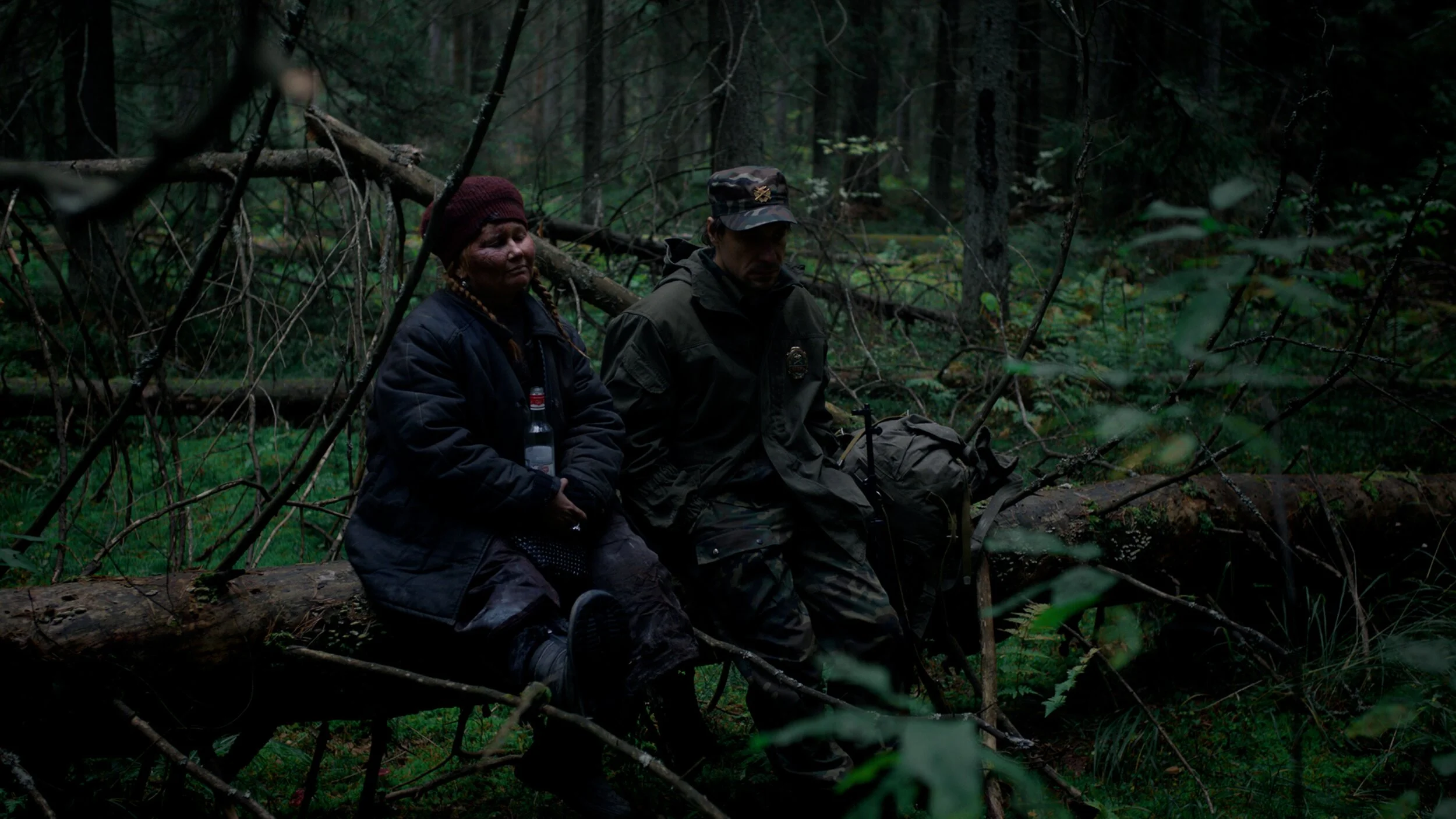Constructing Gender Realities in The Man Who Surprised Everyone
Surprise upends what we thought to be true and presents a new version of our reality. Directors, Aleksey Chupov and Natasha Merkulova attempt to do this with their appropriately titled The Man Who Surprised Everyone. Set in the remote Siberian countryside, the film centres on Egor, a taciturn forest guard, family man, and respected member of his local community. The film opens with a scene of Egor coldly killing a pair of poachers, asserting a normative picture of masculinity: emotionally reserved and duty-bound even when violence is called for.
This impression is immediately complicated by a swift transition to a drab doctor’s office where Egor is told that he is terminally ill with only a few months left to live. He and his wife Natalya scrabble for options through a doctor’s second opinion and an alcoholic shaman to no avail. In an apparent allusion to a Siberian epic, Egor, as a last resort, dresses as a woman so that death may pass him by.
The form of the film hews towards realism through the use of long takes, scenes shot on-location, and understated performances. It’s an appearance familiar to those acquainted with the festival-to-Curzon pipeline of European films from the last two decades. Yet there is a folkloric pulse to the story, immediately signalled by the English title which has the ring of a fable. The narrative of a man who dresses as a woman to evade death is indeed fantastic. It is that interplay between reality and fantasy that makes the film so interesting.
As with anything to do with humans, the real is politically contested territory. A recent hashtag adopted by anti-trans users on Twitter is #ChooseReality, which asserts that biology is the sole determining factor between men and women; anything to the contrary defies reality and is, therefore, a danger to the social order. When Egor dresses as a woman, he sets off an escalating response in his family and the community at large. This reaction bubbles from disbelief and disgust, to outright violence and rape.
To the people in Egor’s life, his change of presentation poses a threat to their perception of reality and so it must be destroyed. A man in the woods, initially perceiving Egor as a woman, tries to have sex, but is disgusted upon feeling Egor’s penis. This leads to a scene in which the man and his friends beat and rape Egor in the forest; a marked contrast to Egor’s position when he is first introduced. It’s reminiscent of the finale in Jonathan Glazer’s Under the Skin. In that film, Scarlet Johanson plays an alien disguised as a human. A man attempts to rape her in a forest. Clawing at her skin breaks the disguise as he uncovers the extraterrestrial flesh that lies underneath, prompting him to pour fuel over her and burn her alive. Both Johanson’s character and Egor disrupt their attacker’s reality. Rape and murder are thus contextualised as the most complete expression of reestablishing reality by destroying the very personhood of those that threaten the perpetrator’s conception of reality. In heterosexist society where men and women are neatly defined and marriage is the only acceptable outcome of human life, those whose existence expose the frailty of such a reality are made vulnerable to extreme forms of violence.
The Man Who Surprised Everyone is not a trans film because Egor would be defined as a crossdresser. However, The Man Who Surprised Everyone has relevance to transness today because its themes highlight the gendered borders of our own reality. Although its context is defined by the rural Siberian setting the relevance of the film extends further. Chupov and Merkulova illustrate that reality cannot be adequately defined by any one person, group or even intellectual framework. Death, whose spectre is the impetus for Egor’s crossdressing, is the only unalterable facet of reality. Yet even that is a universal mystery to human understanding, a fact The Man Who Surprised Everyone reminds its audience of in the film’s final, ambiguous moments.


